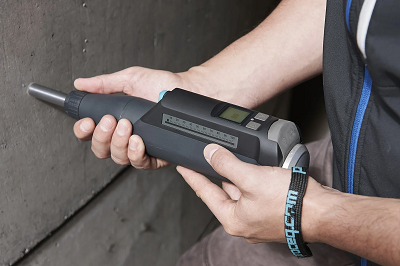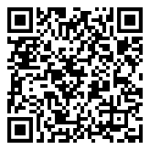REBOUND HAMMER TEST

Objective and Principle
The rebound hammer method could be used for, a) assessing the likely compressive strength of concrete with the help of suitable correlation between rebound index and compressive strength, b) assessing the uniformity of concrete quality; c) assessing the quality of the concrete in relation to standard requirements; and d) assessing the quality of one element of concrete in relation to another.
The Rebound hammer is principally a surface hardness tester which consists of spring-loaded steel hammer (mass) that strikes the metal plunger in contact with the concrete surface when released. It provides the rapid indication of concrete surface hardness measured in terms of the proportion of the energy returned to a standard mass striking the surface, or a plunger in contact with the surface, with a fixed initial energy.
Apparatus Required
1. Rebound Hammer: It consists of spring-loaded steel hammer (mass) that strikes the metal plunger in contact with the concrete surface when released.
2. Abrasive Stone: It consists of medium-grain texture silicon carbide or equivalent material.
3. Testing Anvil: It consists of a steel cylinder with 150 mm diameter and 150 mm height. The hardness Rockwell C (HRC) value of the impact area shall be 64 to 68. The supplier/ manufacturer of the rebound hammer should indicate the range of readings on the anvil suitable for different types of rebound hammers.
Checking of Apparatus
It is necessary that the rebound hammer is checked against the testing anvil before commencement of a test and after completion of test to ensure reliable results.
Procedure
For testing, smooth, clean and dry surface is to be selected. If loosely adhering scale is present, this should be rubbed off with a grinding wheel or stone. Rough surfaces resulting from incomplete compaction, loss of grout, spalled or tooled surfaces do not give reliable results and should be avoided. The point of impact should be at least 25 mm away from any edge or shape discontinuity.
For taking a measurement, the rebound hammer should be held at right angles to the surface of the concrete member. The test can thus be conducted horizontally on vertical surfaces (preferably) or vertically upwards or downwards on horizontal surfaces. If the situation demands, the rebound hammer can be held at intermediate angles also, but in each case, the rebound number will be different for the same concrete. Rebound hammer test shall be conducted around all the points of observation on all accessible faces of the structural element. Concrete surfaces shall be thoroughly cleaned before taking any measurement.
Factors Influencing Test Results
The rebound numbers are influenced by a number of factors like types of cement and aggregate, surface
condition and moisture content of concrete, age of concrete and extent of carbonation of concrete.
Interpretation of Results
The estimation of strength of concrete by rebound hammer method cannot be held to be very accurate and probable accuracy of prediction of concrete strength in a structure can be up to ± 25 percent.
Because of the various limitations in rebound hammer test, the combined use of ultrasonic pulse velocity (UPV) test [IS 516 (Part 5/Sec 1)] and rebound hammer test is a must for proper interpretation. If the quality of concrete assessed by ultrasonic pulse velocity method is 3.50 km/s for grades < M25, and 3.75 km/s for above M25, only then the in situ compressive strength assessed from the rebound hammer test is valid. This shall be taken as indicative of strength of concrete in the entire cross-section of the concrete member represented by the both tests.
Our Other Services
- Rebound Hammer
- Ultrasonic Pulse Velocity
- Half Cell Potentials
- Concrete Core
- Carbonation
- Cover Meter Survey
- Pile Integrity Test
- Pile Dynamic Test
- Bridge Load Test
- Slab Load Test
- Cross Hole Sonic Test
- In-Situ Metallography (Replica)
- Portable Hardness Test (Rebound & UCI Method)
- Expert Metallurgy Consultant For Site
- Pressure Vessel Inspection & Maintenance
- Condition Assessment
- Remaining Life Assessment
- Fitness For Service
- Pipeline Inspection & Maintenance
- Tank Inspection & Maintenance
- IBR/Non IBR Fabrication
- Structural Health Assessment / Structure Audit
- Reactor Inspection As Per Factory Act





